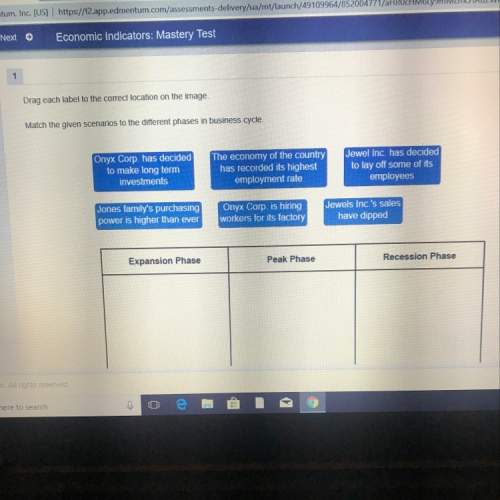
Business, 07.07.2021 15:50 2kdragginppl
Peter, an analyst at Grotesque Tech (GT), models the stock of the company. Suppose that the risk-free rate rRF = 5%, the required market return rtvl = 10%, the risk premium for small stocks rsMB = 3.2%, and the risl premium for value stocks rHML = 4.8%. Suppose also that Peter ran the regression for Grotesque Tech's stock and estimated the following regression coefficients: aGT = 0.00, bGT = 1.2, CGT -20.4, and dGT = -1.3. If Peter uses a Fama-French three-factor model, then which of the following values correctly reflects the stock's required return?
a. 72.52%
b. 60.52%
c. 50.48%
d. 65.52%

Answers: 1
Another question on Business

Business, 21.06.2019 19:30
Maker-bot corporation has 10,000 shares of 10%, $90 par value, cumulative preferred stock outstanding since its inception. no dividends were declared in the first two years. if the company pays $400,000 of dividends in the third year, how much will common stockholders receive?
Answers: 2

Business, 22.06.2019 08:30
Most angel investors expect a return on investment of question options: 20% to 25% over 5 years. 15% to 20% over 5 years. 75% over 10 years. 100% over 5 years.
Answers: 1

Business, 22.06.2019 11:10
Your team has identified the risks on the project and determined their risk score. the team is in the midst of determining what strategies to put in place should the risks occur. after some discussion, the team members have determined that the risk of losing their network administrator is a risk they'll just deal with if and when it occurs. although they think it's a possibility and the impact would be significant, they've decided to simply deal with it after the fact. which of the following is true regarding this question? a. this is a positive response strategy.b. this is a negative response strategy.c. this is a response strategy for either positive or negative risk known as contingency planning.d. this is a response strategy for either positive or negative risks known as passive acceptance.
Answers: 2

Business, 22.06.2019 13:00
Reliability and validity reliability and validity are two important considerations that must be made with any type of data collection. reliability refers to the ability to consistently produce a given result. in the context of psychological research, this would mean that any instruments or tools used to collect data do so in consistent, reproducible ways. unfortunately, being consistent in measurement does not necessarily mean that you have measured something correctly. to illustrate this concept, consider a kitchen scale that would be used to measure the weight of cereal that you eat in the morning. if the scale is not properly calibrated, it may consistently under- or overestimate the amount of cereal that’s being measured. while the scale is highly reliable in producing consistent results (e.g., the same amount of cereal poured onto the scale produces the same reading each time), those results are incorrect. this is where validity comes into play. validity refers to the extent to which a given instrument or tool accurately measures what it’s supposed to measure. while any valid measure is by necessity reliable, the reverse is not necessarily true. researchers strive to use instruments that are both highly reliable and valid.
Answers: 1
You know the right answer?
Peter, an analyst at Grotesque Tech (GT), models the stock of the company. Suppose that the risk-fre...
Questions

Advanced Placement (AP), 07.01.2021 14:00




Biology, 07.01.2021 14:00

Mathematics, 07.01.2021 14:00

Mathematics, 07.01.2021 14:00



Physics, 07.01.2021 14:00

Mathematics, 07.01.2021 14:00

History, 07.01.2021 14:00

Mathematics, 07.01.2021 14:00

Biology, 07.01.2021 14:00



Mathematics, 07.01.2021 14:00

Social Studies, 07.01.2021 14:00





